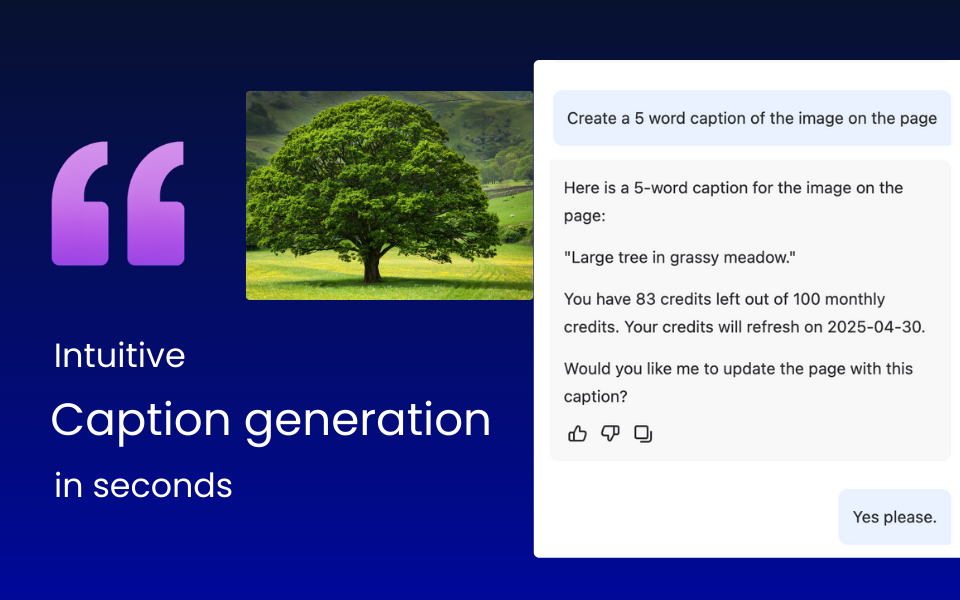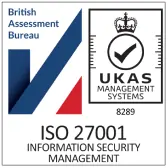Whether you’re a Jira Admin, or simply a day-to-day user, have a think about your Jira instance for a moment. What kind of state is it in?
Are you working in an ordered, usable instance? Or are you wading through unwanted data, duplicates and issues? If it’s the latter (which is the case for a lot of Jira users), then it’s time to start a Jira clean up routine.
Now, we’ve written a whole heap of guidance about Jira clean ups, including time-frames, how to prepare and the 6 key clean up stages. So if you’re unsure how to get started, or need advice on how exactly to conduct one, do take a look at these other guides.
In this article, we’re going to answer the question: what is the importance of a Jira clean up?
In short, an organized and well-managed Jira results in improved usability, more productive teams and increased ROI for your business.
The longer answer takes a bit more time to unpick. So, in this post, we’ll explore:
- Common pain points of a disordered Jira
- How your clean up actions can solve them
- Benefits of Jira clean ups
- Who benefits from well maintained Jira instances
Who’s ready to get started?
Jira clean ups: A bit of background
As you probably know if you have followed any of our previous content, we love Jira here at AppFox.
When well-maintained, Jira is one of the most flexible, dynamic and effective software development and work management tools out there.
But this flexibility can be its undoing. When you have multiple users, issues, projects or custom fields, order can rapidly spiral out of control. And when this happens, your Jira can become harder to use in a meaningful and productive way.
As Matt Doar, Atlassian Community Leader and Jira expert, succinctly puts it:
“It only gets harder to clean up as Jira grows”
Matt Doar, Adaptavist
Regular clean-ups are essential to reducing these risks. In our previous pieces in this series, you can find out how often you should do a Jira cleanup and how to prepare for one.
Today, though, we’re going to drill into the importance of a Jira clean up.
First, let’s look at the pain points associated with ungoverned Jiras.
A ‘Wild West’ Jira: Pain points and challenges
If you haven’t embarked on a Jira clean-up before or fallen behind with your instance maintenance, your Jira might look a little wild. So, you might recognize some of these challenges:
- Performance issues
- Unhappy users
- Lack of control and governance
- Poor reporting
- Challenges troubleshooting
Shall we explore each one in more depth?
1. Performance issues
If your Jira is overrun with custom-fields, and duplicate, incorrect or simply irrelevant data, this is all going to have an impact on performance. (Quick note – this is generally more of an issue for Jira Data Center instances, as opposed to Cloud.)
Think about when you run a query or search. If your Jira has to parse through thousands of pieces of unnecessary information, it can significantly impact the speed at which results can be returned.
Atlassian themselves explored this topic in relation to custom fields. They explained that the raw number of custom fields in Jira affects ‘the response time of any action that requests or processes custom issue details (viewing, searching, creating/editing issues, and adding comments)’.

Chart showing scaling tests for Jira 7.7. Average response times per action (in milliseconds): custom fields test. Credit Atlassian
Rodney Nissen, aka The Jira Guy, also cited this Atlassian testing in one of his blog posts. He summed it up perfectly:
“If we look at JQL Searching alone, at 1400 custom fields, the performance is abysmal at almost 3 seconds. However, doubling the custom field count to 2800 triples that number to nearly 9 seconds…And yes, this is an extreme case. But users will notice a delay of half a second.”
Rodney Nissen, The Jira Guy
How to solve this
We recommend that you review and clean your custom fields during each quarterly clean-up:
- Review the context of custom fields
- Identify and remove duplicate fields
- Identify and delete disused custom fields
- Gather feedback from your users – is there a culture of creating unnecessary new custom fields, for example? What do your users want to achieve?
Remember, you can deep dive into the recommended timeframes for a clean up (monthly, quarterly and annually) in our Jira Clean Up Timeframes guide.
2. Unhappy users
If your Jira instance is disorganized, it’s going to be a challenge for your teams to get their work done effectively. It can take longer to run searches (as we’ve already mentioned), harder to find the information you need, and generally more complicated to complete your actions. As we’ll touch on later, a messy Jira instance can also lead to poor reporting.
When tasks take longer to complete, it naturally hampers productivity. And when your team members start to feel demotivated, this can ripple across the entirety of their work.
What’s more, usability issues can also impact your Jira outputs. Jira superstar, Rachel Wright, gave a great example of this in an interview:
“I worked with a Jira instance once that had hundreds of issue types, and every time a new issue was created, a user had to scroll through…them. They weren’t even alphabetical. This [meant it was] hard for users to choose the right issue type. …Most of the time they got frustrated, so they’d just choose the first one which kind of made sense. And when users aren’t making good selections, your data suffers and your reporting suffers. So this company could not get a good idea of what kind of issues they had in their application, because there were hundreds and people were just picking whatever.”
Rachel Wright, Jira Expert
How to solve this
We’ve already referenced using clean ups as an opportunity to gather feedback from your users. This should be a continuous activity throughout the year, so try to reach out to users on a monthly basis.
This can provide you with the opportunity to build a long term picture of sentiment and behaviour among your user base. It also gives you plenty of time to respond to feedback, decide how to approach challenges, and to give notice of future configuration or process change.
You can then use your annual clean up to embed those changes.
Taking this approach works on several levels:
- Users feel valued
- Reinforces a culture of standardization and consideration
- Demonstrates how valuable the clean up process is
3. Lack of control and governance
Without clear processes and guidelines in place, software can rapidly stray from the default.
Sometimes, this is unavoidable. If your Jira instance began as a tool solely used by one team, for example, and was then adopted by other teams as your organization increased in size, it’s likely that standards began to spiral.
We know it can be super hard to maintain consistency whilst also scaling quickly and responding to new use cases.
Unchecked customization can also contribute to an out of control instance, as Alex Ortiz, of Apetech Tutorials and known as “Dr. Jira”, touches on:
“Just because you can customize something in Jira, it doesn’t mean you should.. While Jira’s gift to the world is that you can customize it, it’s also a curse… It makes it so much more complex [and] becomes really hard to maintain.”
Alex Ortiz, Jira Expert
If there’s a lack of governance, you may find users making unsustainable or unecessary changes. Alternatively, without clear guidance some users may not have confidence to make any changes, which hinders their productivity.
How to solve this
Use your clean up as an opportunity to educate your stakeholders and users, and to either reinforce or introduce new standards and guidelines. This could include a formal change-management process.
This shouldn’t be a one-off activity. Once you’ve communicated new standards, you then need to ensure that you are upholding them throughout the year. You can use your monthly or quarterly clean ups as an opportunity to encourage and review processes, and gather feedback (as we touched upon before).
It may also be valuable to provide documentation around using Jira, so that if users have a query about the ‘right’ way to create a custom field, for example, they can search for some support themselves.
4. Poor reporting
Let’s turn to Rachel Wright again, as she sums up this point perfectly:
“If you’re putting junk data in, you’re getting junk data out.”
Rachel Wright, Jira Expert
If your users are creating unnecessary or inconsistent fields, mislabelling items or selecting incorrect issues, your reporting data is going to be based on inaccurate information. Essentially, it will be worthless.
How to solve this
Really commit to your regular clean up routine (which, as a reminder, should comprise monthly, quarterly and annual activity). This enables you to maintain standards and to regularly review and remove duplicate, inactive or inaccurate data, to stop it piling up and impacting your reporting outputs.
5. Challenges trouble-shooting
This kind of links to the previous point. If your Jira is overflowing with irrelevant data, it becomes harder to identify how and where problems arise.
You won’t be able to pinpoint errors without having order and clarity in your instance. Instead, you might find yourself trying to untangle symptoms, without being able to diagnose the root cause of a problem.
How to solve this
Again, regular Jira auditing, reviews, and clean-ups are the key to this.
A cleaner instance will result in fewer places for problems to lurk undetected and will provide a far more conducive environment for you to investigate and explore obstacles.
There are also tools out there to help you.
We briefly mentioned Optimizer for Jira earlier. Well, its Data Center version has a user impersonation feature called ‘Switch User’, which enables admins to jump into the shoes of users and can help with troubleshooting. When you experience Jira from another user’s perspective, it can really aid your understanding of their challenges – and hopefully help you troubleshoot any problems.
We promise it’s not all doom and gloom. It’s time to move on to the benefits of a Jira clean up (and there are a lot!).
The importance of a Jira clean up
Now we’ve talked about some of the issues that an ‘unclean’ instance can incur.
Let’s flip this on its head.
Once you’ve got into the swing of your Jira clean up routine, it can deliver highly valuable benefits for you and your team (and start to understand the importance of a Jira clean up)
1. Improved ROI
You should be able to see a better return on investment based on a number of metrics, from increased user productivity, to enhanced reporting (which, in turn, enables more meaningful business decisions).
2. Better maintenance
Even if you’ve inherited (or perhaps been the unwilling architect of!) a Jira ‘swamp’, as Rachel Wright describes it, once you’ve got into the swing of your Jira clean up routine, you should start benefitting from a generally better-maintained instance.
This means, over time, that your clean ups should become less intensive. And, if you maintain a culture of standardization and engagement from your users, there should be an overarching sense of buy-in and collective responsibility from your stakeholders.
3. Team satisfaction and productivity
We touched on this already in the ROI section, but it’s worth highlighting again.
Regular Jira maintenance will make it a clearer work environment for your users. This, in turn, will enhance your team’s productivity, and work will flow more smoothly.
4. Reduced complexity
Jira is a powerful tool, busting with capabilities. It’s not realistic to expect that someone could just jump on board and begin using it.
However, whilst onboarding and training is essential, it’s also important to ensure that users can use the tool without excessive hand-holding and that they can soon become self-sufficient.
A well-maintained instance can support with this, and lead to faster and more effective work across your team. This should also reduce the burden on Jira Admins or your internal Support Desk, as they should need to provide less support or guidance for day-to-day activities.
5. Security and compliance
A cluttered Jira instance can increase the risk of human error, be that oversights in process or inadvertently mis-sharing information. At a more malicious level, it could be harder to identify purposeful misuse of data.
A cleaner and more sustainable instance is a more secure Jira instance.
It should also be easier to undertake audits, and to ensure your processes are complying with your internal policies.
6. Faster performance
If you’re using Jira Data Center, enhanced performance is a real bonus of Jira clean ups. With fewer custom fields, you should see increased response times.
The engineering team at Intuit recently published a great blog all about their efforts to improve the performance of their Jira. It’s well worth a read in full, but we’ll just highlight one metric here from Intuit Engineering:
“We had close to 500 custom fields… To improve performance, we deleted unnecessary custom fields and consolidated duplicate custom fields. Most importantly, we limited the scope of custom fields to the project context rather than the global context, which significantly improved the performance of Jira API searches. As a consequence, we’ve removed more than 100 fields.”
Joe Bloggs, Lakshmi Narayanan
Later in the post, the author shared that this work had contributed to a 69% improvement in response time, for Jira API searches alone. This is a truly impressive metric – and your Jira clean up actions could help you to achieve similar success stories.
7. Ability to scale
Take the time to review and clean your instance and you’ll be in a better position to plan and resource for scaling.
For long term success, you need a long term plan! And to really develop this plan, you need to have a strong handle on the state of your Jira instance.
Now, if you’ve already embedded a regular Jira clean up routine, this audit of your instance should be pretty pain-free. Your Jira should already be in good order, with only active or valuable data, limited customizations and consistent labelling throughout. You should also have a culture of accountability and strong governance in place, and comprehensive documentation.
All these elements can set you in good stead to begin planning – and executing – your scaling journey.
Who benefits from a Jira clean up?
It might be easy to assume that the key beneficiaries of a clean up are the users themselves. In reality though, regular clean ups can extend benefits across your entire organization.
Let’s start with the unsung heroes of Jira (in our eyes): the Jira Admins!
1. Jira Admins
Whether you’re a part-time Admin (believe us, we really respect the juggle!) or a full-time Jira Admin, clean ups make your life easier in a several ways. The most obvious is that, of course, you’ll be dealing with a cleaner, more ordered instance.
But a clean up also provides valuable opportunities to engage stakeholders and encourage them to buy-in to the importance of the work. This is helpful, as we know it can be a real uphill battle when stakeholders simply don’t have the context to care about your instance.
2. Senior management
A Jira clean up ultimately results in increased ROI, as teams are more productive and efficient. This is good news for senior stakeholders. They’ll also appreciate improved data accuracy and reporting outputs.
3. Project owners/managers
Happier teams result in happier project owners and managers!
With a Jira clean up, work will flow more smoothly, users can have more autonomy (whilst adhering to your agreed Jira standards, of course…), and it will be easier for project managers to oversee progress, track milestones and address barriers.
4. Users
An ordered and well-maintained Jira environment makes your user’s day-to-day work easier.
Equally as important in our eyes, however, is the communication piece of your Jira clean ups.
By using your clean ups to reach out to users, gather feedback and communicate upcoming changes, your users will feel listened to. This, in turn, can enhance user satisfaction, productivity and commitment to your work and projects.
A little clean up goes a long way.
What next?
Hopefully you’re leaving this piece today with a much clearer idea of the importance of a Jira clean up
Let’s just summarize quickly as we finish up:
Regular Jira clean ups are important because they lead to a more sustainable, usable and secure Jira instance.
They also contribute to a culture of standardization, reduce the risk of issues, projects and fields building up and impacting performance and usability, and they ultimately lay the foundations for long term success in your organization.
Now we’ve covered the why, let’s look at the how.
Preparation is the key to success, so head over to our first piece in this series: How to Prepare for Your Jira Clean Up.
Once you’ve gone through that (we recommend putting the kettle on, as these are fairly long reads!), why not take a deep dive into Jira Clean Up Timeframes. These outline how often you should be doing your clean ups, and explain upon which areas you should focus at each stage.
And for a more comprehensive look at each step of a clean up, our guide to The 6 Stages of a Jira Clean Up is well worth a read.
If you’re looking for a tool to support with your Jira clean ups, why not also take a look at Optimizer for Jira?
From having a bird’s eye view of your instance, so you can instantly identify problem areas, to taking bulk actions, such as deleting duplicates, Optimizer provides you with the visibility and functionality you need to maintain your Jira – with ease, speed and confidence.
“This add-on has been a real life-saver and gives a lot of capability for cleanup and insight into the Jira system – especially for a large Jira setup including multiple Jira instances.”
Christina Robinson, Atlassian Marketplace
Optimizer for Jira is the clean up companion every Admin needs by their side. If you’d like to find out more, why not give it a try with the Atlassian Marketplace 30-day free trial? It’s available for Data Center, Cloud and Server applications. (Do note, some functiosality differs across each version)
And if you need any support, or simply have a question for our team, don’t hesitate to reach out!








